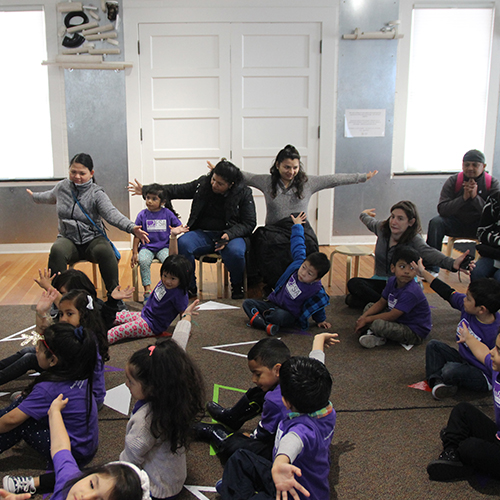Children will learn about shapes by using their whole bodies to physically explore the properties of squares, triangles, rectangles, and more!
Materials Required
- Tape or chalk
- Large stones, bean bags, or similar objects (optional)
- Full-length body mirrors (optional)
Instructions
- Use the tape or chalk to draw shapes on the ground (e.g. triangles, squares, etc.). Make sure to draw various types of each shape, such as a triangle with wide angles and an equilateral triangle. At each point of the shape, place a large stone or similar object, if available. If using mirrors, set them up in an open space nearby.
- Introduce children to the shapes they will explore that day using picture books and/or photographs of shapes in the real world. Introduce the terms side and point when describing the shapes, i.e., “A triangle has three sides and three points.”
- Invite children to balance along the shapes, walking around the perimeter of the taped shape and pausing to balance on the point. Ask them what they notice about each shape. For example, “How do you know it’s a triangle? What’s the same and what’s different about each shape?”
- Invite children to be creative by using their bodies to make shapes in the mirror, or by looking at each other. Prompt them by asking, “How can you make a triangle with your body? A square? A rectangle? How can you make a square with a friend?”
Additional Tips
Try these add-on activities:
- Lead a shape scavenger hunt around the room or outside, looking for shapes in the real world. How many squares can children find? How many rectangles? Have them share their findings with the group.
- Introduce a few relevant yoga poses for children, such as Triangle Pose. Show images of what the pose looks like, discuss how you can tell it’s a triangle, and invite children to try the pose together.


